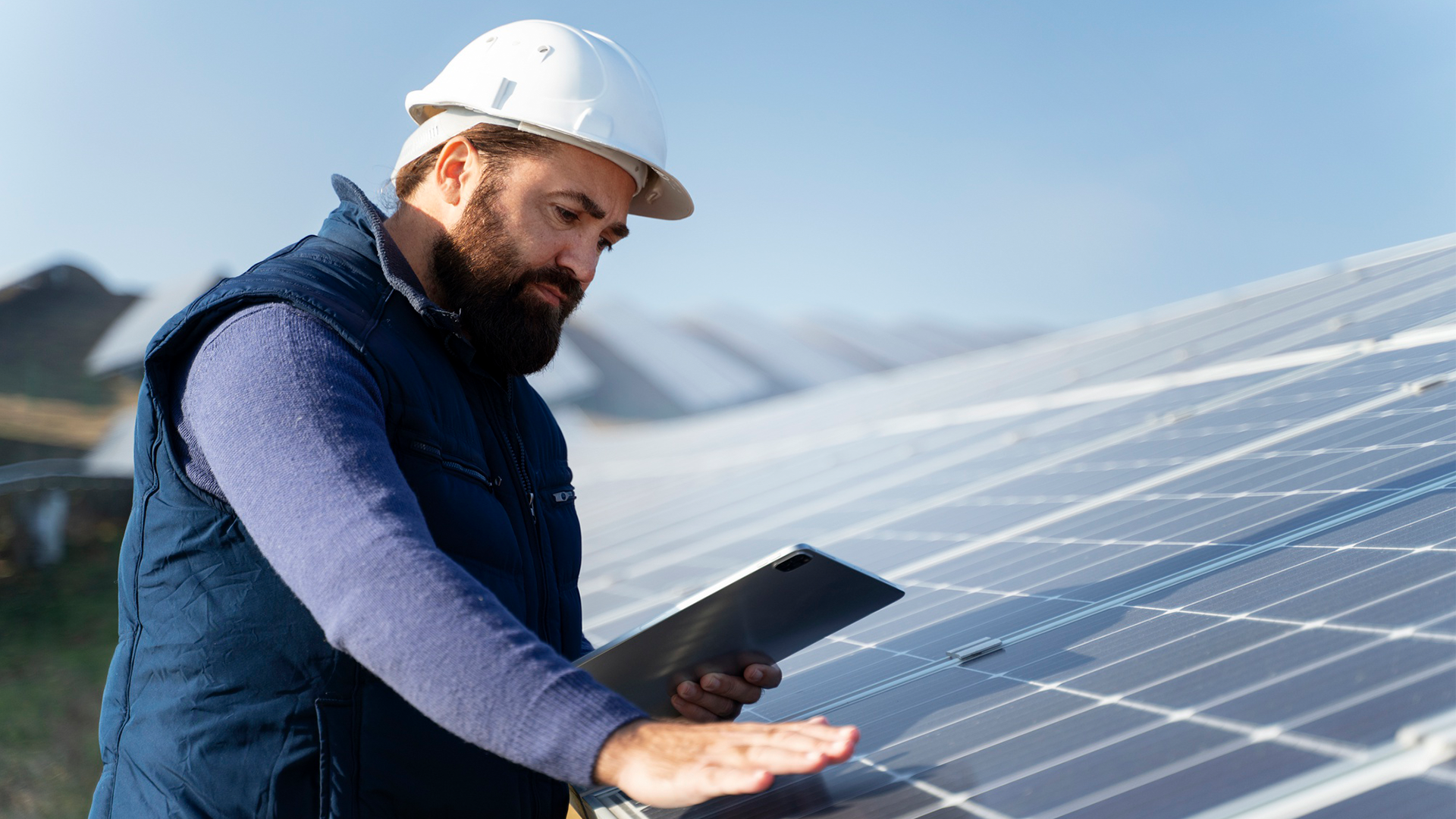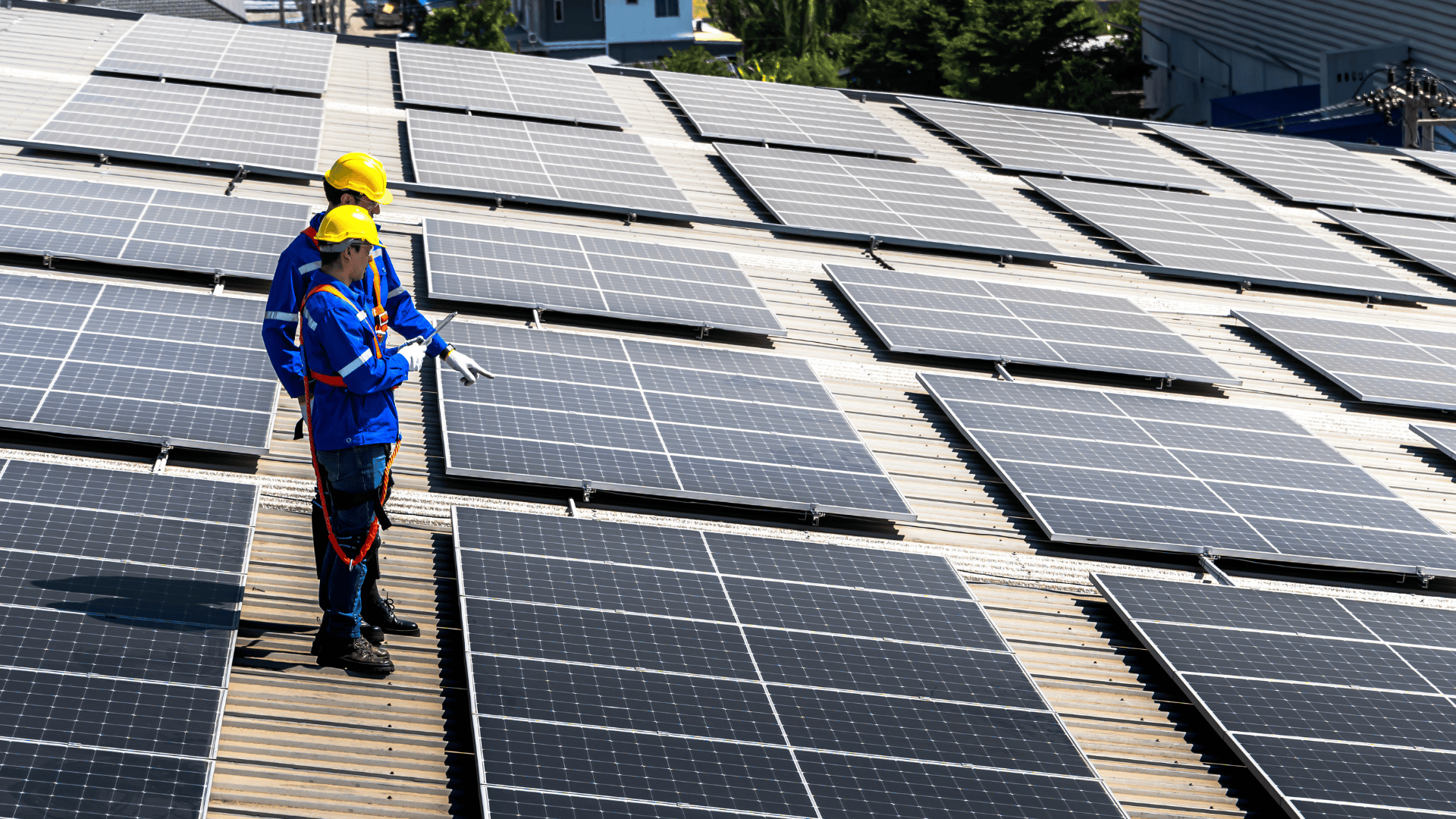November 11, 2021
Many solar panels on the market today are rated for "peak performance" when facing south and tilted to an angle equal to your latitude. But what about when the solar panels are not receiving direct sunlight? How would these panels behave if they were blocked from receiving direct sunlight? Would they still generate solar power or would the blocks of shade or partial shading lead to a significant loss in power generation potential?
This is obviously something that most consumers of solar energy want to know, especially those who intend to install solar panels on buildings where there may be large trees or roofs nearby or have cloudy weather in their area. It can also apply to larger-scale installations such as entire rooftops and parking structures.
Continue reading this blog to get answers to these questions!
Understanding Solar Panel Performance in Different Light Conditions
Optimizing the efficiency of your solar power system hinges on comprehending how varying light conditions affect your renewable energy output. A solar panel array's performance isn't solely dictated by direct sunlight. Factors like partial shading and cloud cover can impact solar panel production.
Even when portions of the solar array are shaded, bypass diodes enable continuous electricity flow, enhancing overall efficiency by 5% to 15%.
Though solar panels are rated for peak performance under full sunlight, real-world installations experience different levels of shading due to structures and vegetation.
Therefore, grasping how solar panels respond to these diverse light conditions is crucial for maximizing your solar array's potential.
What do you understand by Shadings and Solar Irradiance?
The performance of a solar panel array is intricately linked to solar irradiance, a measure of solar energy intensity reaching the panels. Shading, whether from buildings or vegetation, can significantly impact a solar array's output.
In the context of a solar array, shading can cause uneven distribution of solar irradiance, leading to varied power generation across the array. This is particularly crucial in systems utilizing string inverters, as a shaded panel can disproportionately affect the entire string's production.
String inverters work optimally when all panels in the string receive similar irradiance levels. While indirect sunlight and overcast days also contribute to solar irradiance, managing shading-induced power losses through technologies like microinverters or power optimizers can help ensure consistent DC electricity conversion, enhancing the efficiency and performance of the solar panel array.
Will Solar Panels work in the shade?
If you need a short answer, Yes, solar panels do work in the shade. Still, the power generated by solar panel cell are not at their maximum capacity when they receive a smaller amount of sunlight than usual.
It is complicated to answer the question "Do solar panels work in the shade?" It's because there are two types of shading that can occur with solar panels-
- Diffuse light
- Shadowing
Diffuse Light
Diffuse Light means that there might be clouds or other obstacles between your panel and the sun, reducing the amount of solar energy produced by 50-75%.
Shadowing
Shadowing occurs when something is physically blocking some or all of a panel from receiving sunlight. This will reduce power generation proportionally to how many parts of a cell are blocked for example for 30% shading you would lose about 30% efficiency.
Do Solar Panels Work at Night?
Though at a much lower efficiency than during the day. You can achieve an overall roundabout of 10-15% of your setup's rated capacity by putting some solar cells in series throughout the night (i.e. 3 panels each with 100W output in series will give you a 300W peak).
So if you are planning on powering something that requires very little power, putting it after sundown might be an option for you.
This is one reason solar panels are less efficient farther apart because more diffuse light comes from other angles, increasing the loss to 50%. This effect is not included in any simulation but should be considered when designing a system using multiple panels.
What happens when Solar Panels are Shaded?
When solar panels are shaded, they produce electricity at less capacity than when in full sunlight. This is because shade causes the current of electrical charge to slow down, so fewer electrons pass through the circuit and so little to no electricity gets produced.
But don't worry! Even in the shade, your panels will still generate power which will make its way back into the grid for you to use!
Solar systems nowadays operate at 97% peak performance even in low light conditions such as on cloudy days or near the equator where many other types of solar panels can't generate significant amounts of electricity.
Read this to learn more about how to maximize the efficiency of your Solar panels.
Sources that can cause Shading
Solar panels may receive less sunlight exposure from the sun owing to one or more of the following reasons:
Clouds
Cloud coverage during a given day varies, but on average there is about 60% cloud cover across the globe. This figure includes areas with heavy overcast as well as those that are just partly cloudy.
Hence if there are a lot of cloudy days in your area, your solar panels may not work at their full capacity.
Season
It is a well-known fact that solar panels produce less power during winter and nighttime hours than at other times of the year due to fewer peak sun hours. While during a sunny day, the solar panel works at its maximum capacity.
Angle
The sun's rays hit a solar panel at an angle that can vary throughout the day as well as with season and location. Solar panels in Arizona receive sunlight from a shallower, more direct angle compared to those in New York.
This means that Arizona panels experience stronger light intensity per hour but also lose power generation output potential from shading by nearby objects, such as buildings or trees.
Atmospheric conditions
Dust and humidity can accumulate on solar panels, resulting in a reduction of power generation potential.
Solar panels require sunlight to generate electricity, but not direct sunlight. They can work in the shade of clouds or other objects.
This shouldn't be a concern for most homeowners since solar panel placement usually isn't an issue. However, there are certain instances where shading issues can become a problem and affect energy production.
Solar panel placement is extremely important when it comes to the efficiency of solar panels. Solar panel output varies depending on where they're located. Most modern solar panels can produce energy between 3% and 22% of the incident sunlight that strikes them. This means that you'll get less than full power from your system if it's partly shaded during much of the day.
For instance,
you may lose 10% or more of system performance if large trees near your home cast shadows on your array for several hours every day.
How can Solar Panel Efficiency be Increased?
Increasing the efficiency of solar panels is crucial for maximizing energy production and making solar power more cost-effective. Several key strategies can be employed to enhance solar panel efficiency:
- Improved Photovoltaic Materials: Advancements in photovoltaic materials, such as multi-junction solar cells and perovskite materials, can significantly boost efficiency. These materials can capture a broader spectrum of sunlight and convert it into electricity more efficiently than traditional silicon cells.
- Anti-Reflective Coatings: Coating the surface of solar panels with anti-reflective materials minimizes the loss of incoming sunlight due to reflection, allowing more light to penetrate and be converted into electricity.
- Optimal Panel Orientation and Tracking: Ensuring that solar panels are properly oriented towards the sun and implementing tracking systems that follow the sun's path throughout the day can increase energy capture, especially in locations with varying sun angles.
- Improved Inverters: Upgrading inverters, which convert DC electricity produced by solar panels into AC electricity usable by homes and the grid, can reduce energy losses and improve overall system efficiency.
- Enhanced Cooling: Solar panels operate less efficiently as they heat up. Incorporating effective cooling systems, such as liquid cooling or passive cooling techniques, can maintain lower operating temperatures and improve efficiency.
- Reduced Shading and Soiling: Keeping solar panels free from shade and dirt is crucial. Regular cleaning and proper site selection can mitigate shading and soiling issues that can reduce panel efficiency.
- Bifacial Panels: Bifacial solar panels can capture sunlight from both sides, reflecting light off surfaces below them. This design increases overall energy production.
- Energy Storage: Integrating energy storage systems like batteries can improve solar panel efficiency by storing excess energy for use during cloudy or nighttime conditions.
- Technological Innovations: Continued research and development in solar technology, including new designs and manufacturing techniques, can lead to breakthroughs that enhance efficiency.
- Maintenance and Monitoring: Regular maintenance and monitoring of solar panel systems can identify and address issues that may reduce efficiency over time, such as panel degradation or connection problems.
Solar panel efficiency can be increased through various methods, including the use of advanced design software like Sunbase Solar Design Software. This software offers significant advantages over random/manual calculations and positioning when it comes to maximizing solar panel efficiency.
Conclusion
In the realm of solar energy, understanding how shading influences a solar panel system is pivotal for optimizing performance. Shaded solar panels can substantially impact energy production due to the intricate interplay between solar irradiance and panel efficiency. Whether caused by buildings, trees, or other obstructions, shading disrupts the harmonious energy capture of a solar array.
Mitigating these effects using advanced technologies like microinverters or power optimizers is paramount to counteracting shaded solar panels' negative impact. By delving into the nuances of shading, solar energy enthusiasts can unlock the true potential of their systems, harnessing the sun's power more effectively and reaping the rewards of sustainable energy generation.
About Sunbase
Sunbase helps solar companies succeed through a suite of Solar CRM tools! If you are a solar company, book your free demo or an appointment by contacting us here!
I agree to receive marketing messaging from Sunbase at the phone number provided above. I understand data rates will apply, and can reply STOP to OPT OUT.







